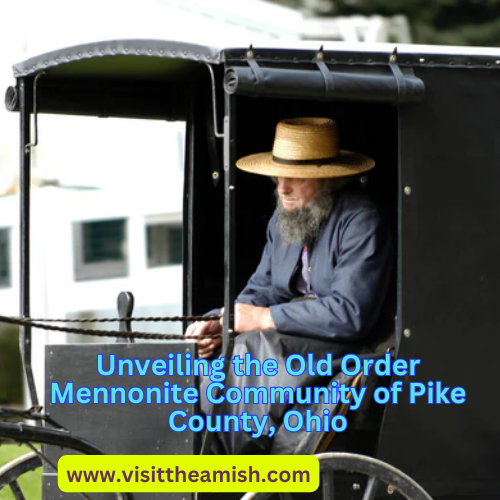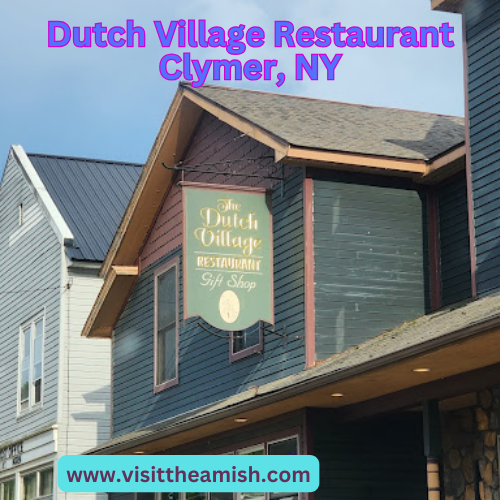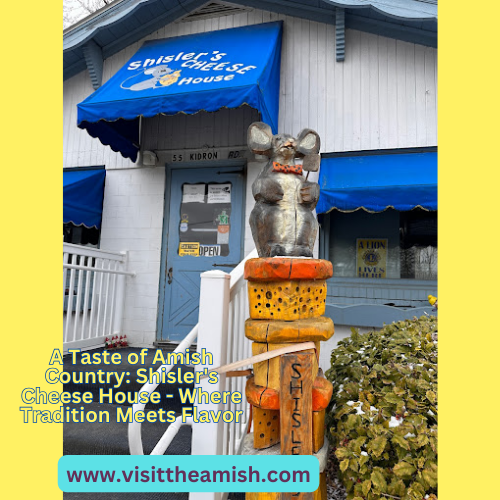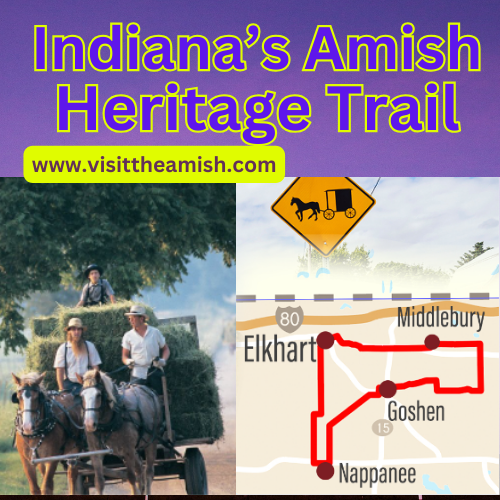Unveiling the Old Order Mennonite Community of Pike County, Ohio
Nestled amidst the rolling farmlands of Pike County, Ohio, lies a community frozen in time. Here, the clip-clop of horse-drawn buggies replaces the roar of engines, and simple living takes center stage. This is the world of the Old Order Mennonites, a religious group whose traditions paint a captivating picture of faith, self-sufficiency, and a deep connection to the land.
A Legacy of Faith and Simplicity
The roots of the Pike County Mennonite community stretch back to the 18th century, when German immigrants seeking religious freedom arrived in the region. Their beliefs, based on a literal interpretation of the Bible, emphasize pacifism, separation from the world, and a close-knit community life. These core values permeate every aspect of their existence.

A Life Unplugged: A Day in the Life
Imagine a world without electricity, television, or the constant buzz of technology. This is the reality for the Old Order Mennonites. Their days begin with the rising sun, as families rise to tend to their farms, a cornerstone of their self-sufficient lifestyle. Men, dressed in dark clothing and straw hats, work the land with horse-drawn plows, while women, adorned in traditional bonnets and dresses, tend to their homes and gardens. The rhythm of life is dictated by the seasons, a harmonious dance between nature and faith.
Beyond the Farm: A Rich Cultural Tapestry
While agriculture plays a vital role, the Mennonite community boasts a surprising level of cultural richness. Quilting, a time-honored tradition, is not just a hobby; it’s an art form. Homes are adorned with breathtaking quilts, each stitch telling a story, passed down through generations. Singing, a cappella and heartfelt, forms a cornerstone of their religious services, filling the air with a sense of reverence and community.
Exploring Mennonite Businesses in Pike County, Ohio
Venture into the heart of Pike County, Ohio, and you’ll be greeted by rolling hills, Amish farms, and a unique cultural experience. The Old Order Mennonite community, known for their dedication to faith and simple living, also contributes to the local economy through a network of businesses. Here’s a glimpse into some of these enterprises, complete with details to help you plan your visit:
From Farm to Table: A Bounty of Fresh Produce
- Miller’s Produce: This roadside stand, located just outside Waverly on State Route 33, is a haven for fresh, seasonal produce. The Miller family, devout members of the Mennonite community, offers everything from sweet corn and juicy tomatoes in the summer to crisp apples and colorful pumpkins in the fall. (Open daily from 8am to 6pm, cash only)
- Pike County Farmers Market: Held every Saturday morning from 9am to 1pm in Piketon (across from the courthouse), this vibrant market features several Mennonite vendors. Find locally raised meats and eggs from Yoder Farms, a family-run operation committed to sustainable practices. Stock up on seasonal vegetables and homemade jams from the Schrock family stand, known for their generations-old recipes.
Beyond the Fields: A Crafter’s Paradise

- The Quilt Gallery: Nestled in scenic Bloomingburg, The Quilt Gallery showcases the breathtaking artistry of the Mennonite community. Owned and operated by the Miller family, this shop displays a stunning collection of handmade quilts. Each piece is a masterpiece, a testament to tradition and artistic skill, passed down through generations. (Open Tuesdays through Saturdays from 10am to 5pm)
- Schrock’s Custom Furniture: Mennonite craftsmanship shines at Schrock’s Custom Furniture in Piketon. While the shop primarily caters to the community’s needs, they also welcome visitors seeking unique, handcrafted pieces built to last. Expect to find sturdy dining tables, comfortable rocking chairs, and beautifully crafted bedroom furniture, all imbued with a timeless elegance. (Open Mondays through Fridays from 8am to 4pm, closed Saturdays)
- Stauffer’s Harness Shop and Windy Ridge Belgians: 5940 Dry Bone Road, Hillsboro, OH 45133
A Taste of Home: Mennonite Bakeries and Country Stores
- Country Crust Bakery: A beloved destination in Bainbridge, Country Crust Bakery offers an irresistible selection of homemade treats baked fresh daily. From melt-in-your-mouth donuts glazed to perfection to their legendary Goliath apple fritters, this bakery is a must-visit for anyone with a sweet tooth. Don’t forget to try their soft pretzels, a local favorite known for their irresistible chewiness. (Open Tuesdays through Saturdays from 8am to 5pm, cash only)
- Egger’s Country Store: This charming store located just outside Piketon is a delightful stop for everyday essentials and a taste of Mennonite tradition. Owned and operated by the Egger family, the store offers a curated selection of canned goods, dry staples, and locally made honey. Be sure to check out their selection of handcrafted wooden toys, a perfect souvenir of your visit to Pike County. (Open Mondays through Saturdays from 9am to 5pm)
A Bridge Between Two Worlds. The Old Order Mennonites of Pike County exist in a delicate balance between tradition and the modern world. While they remain steadfast in their beliefs, a quiet kind of adaptation is evident. Some families have embraced limited use of technology for specific purposes, like communication or medical needs. The buggies share the road with the occasional car, a testament to a community cautiously navigating the currents of change.
A Glimpse into a Simpler Time
Visiting the Old Order Mennonite community of Pike County is like stepping back in time. It’s a chance to witness a way of life centered on faith, family, and the land. It’s a reminder that happiness needn’t be equated with material possessions, and that a deep sense of community can be a powerful foundation for a fulfilling life. However, it’s important to be respectful of their privacy. While some shops run by the community welcome visitors, avoid entering private property or taking pictures without permission.

The Old Order Mennonites of Pike County are a testament to the enduring power of tradition. Their way of life, though seemingly different, offers valuable lessons on simplicity, self-reliance, and the importance of community. It’s a reminder that sometimes, the most enriching experiences lie in discovering worlds unlike our own.







































